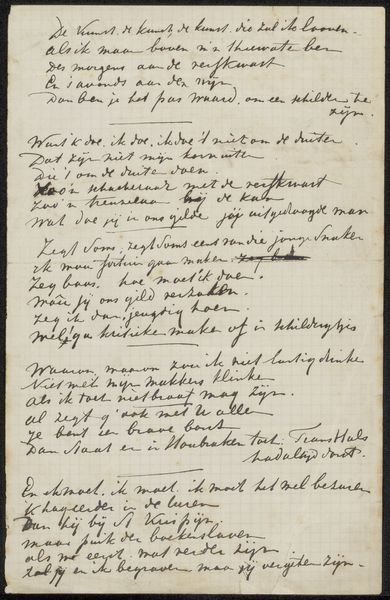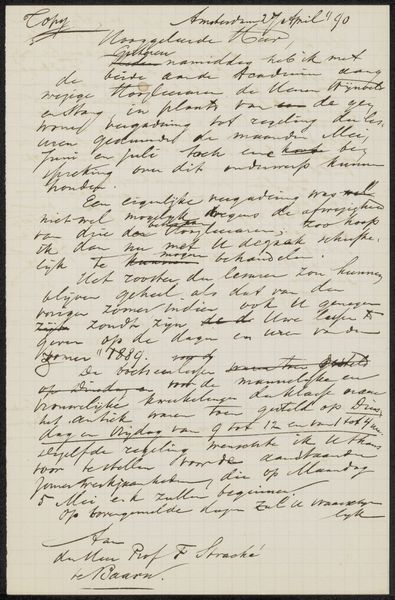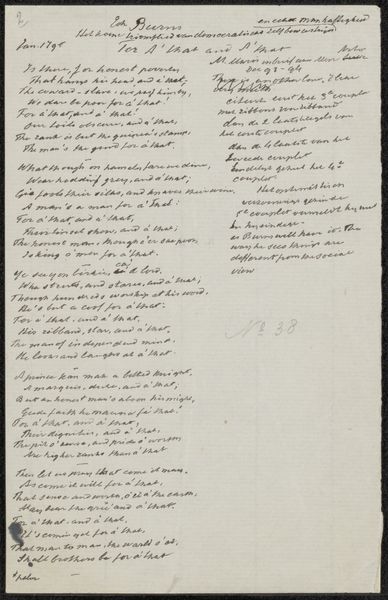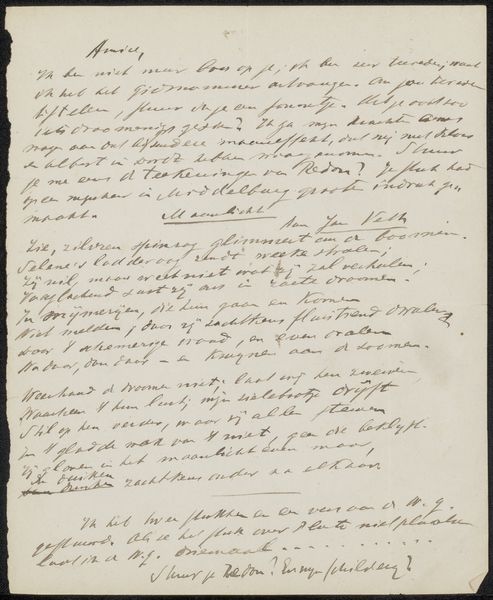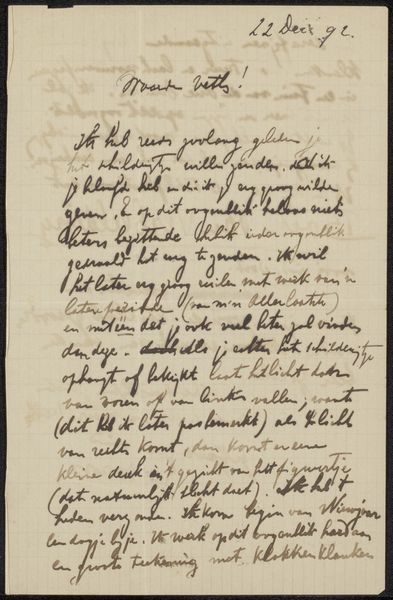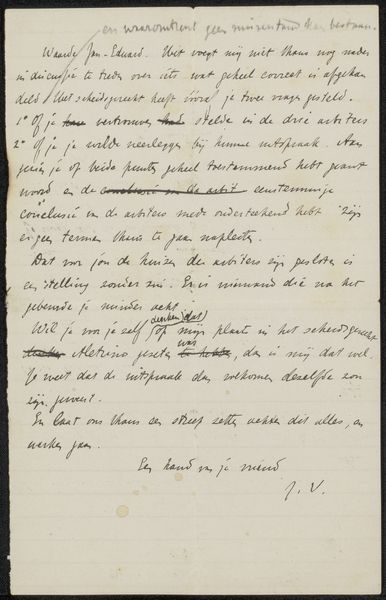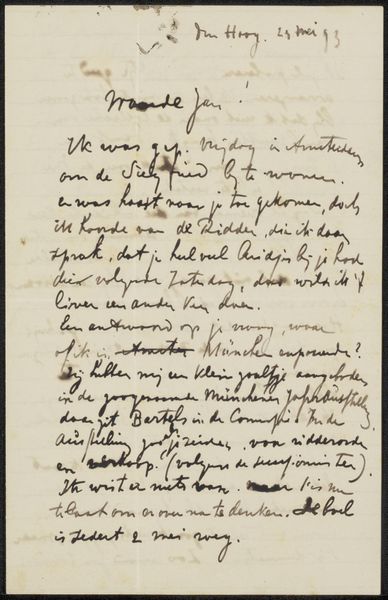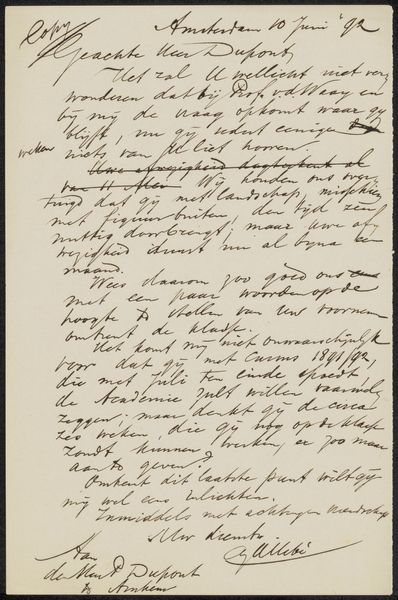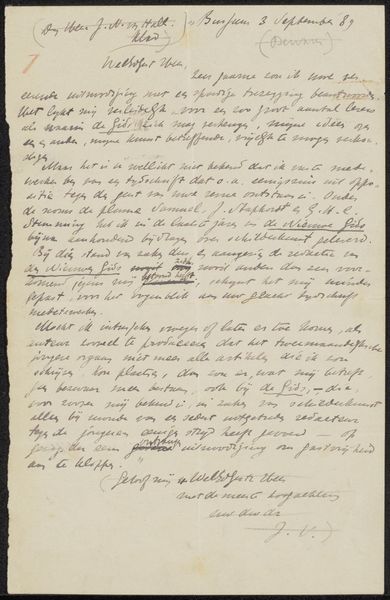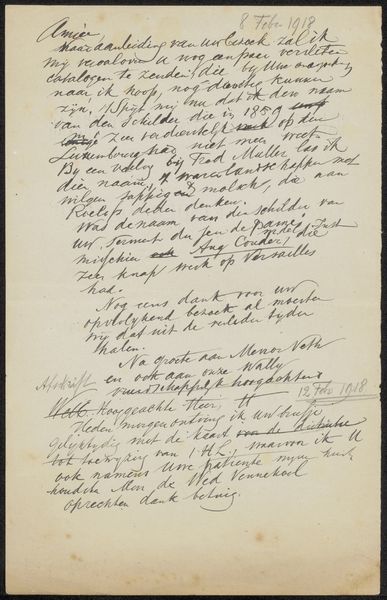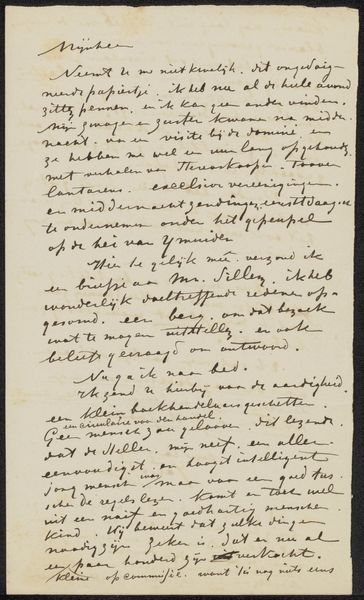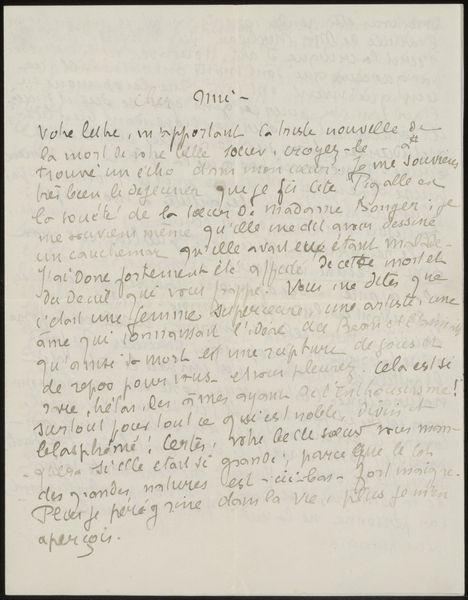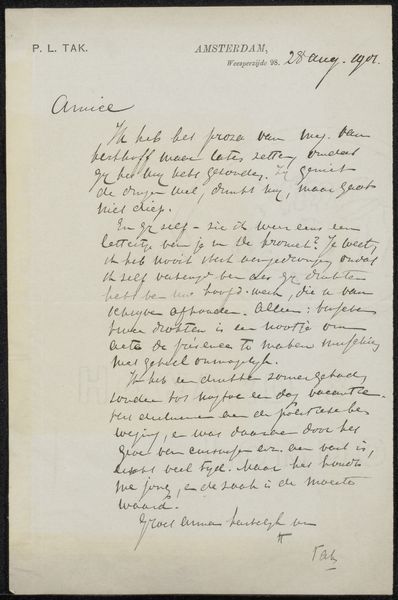
drawing, textile, paper, ink
#
drawing
#
textile
#
paper
#
ink
#
calligraphy
Copyright: Rijks Museum: Open Domain
Curator: Well, "Gedicht uit archief Jan Veth," Poem from the Jan Veth Archive" dating to sometime between 1865 and 1930. It's ink on paper and textile and is a handwritten poem. The poem is intriguing and seems a little gloomy... there’s a powerful emotionality in those swirling lines. What do you see in this piece? Editor: I'm drawn to the handwriting, that calligraphic style. It feels like a very personal, intimate object. Curator: Precisely! It's fascinating to consider handwriting as a direct extension of thought, almost like a fingerprint of the mind. And in this case, that looping script certainly amplifies the poem's intense atmosphere. The strokes have their own kind of wildness. This piece breathes intimacy, wouldn’t you agree? The connection to textile is equally interesting. It asks if words offer any protective comfort against the world, much like a garment. What do you make of this? Editor: The textile connection really deepens that sense of vulnerability. The poem itself speaks of "blood is his garment"—that image is both powerful and a little unsettling. I think the combination really blurs the line between text and experience. Curator: Beautifully put! I also wonder if the poem's handwritten form pushes against the permanence we often ascribe to writing. Each word feels fluid, subject to change, much like the very time it describes. As we read the poem, it vanishes, just as time escapes our grasp. What does the handwritten format make you reflect upon? Editor: I had only been seeing it as a historic handwritten relic! The piece is a reflection on ephemerality, written in a transient form! I like how the medium deepens the message itself. Thank you! Curator: The beauty is often in the reflection of perspective! It’s truly an honour and privilege to muse alongside you.
Comments
No comments
Be the first to comment and join the conversation on the ultimate creative platform.
